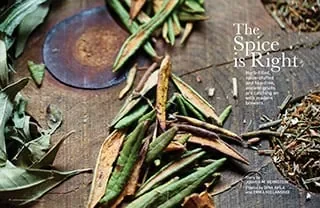The Rise of Gruit Beer | Imbibe Magazine
One of brewing’s fundamental rules is that beer is comprised of malted grain, water, yeast and hops. Grains supply the fermentable sugars that yeast convert into alcohol, while hops provide balancing bitterness, preservative prowess, flavor and aroma. Today, hops are nearly as crucial to beer as water, especially in this IPA-crazed era. But if you were to time-travel to visit medieval brewers, you’d discover that beer contained nary a hop.
Back then, beers were seasoned with gruit (pronounced “grew-it” or “groot”), which was a proprietary blend of herbs such as bitter and astringent yarrow (a flowering plant), wild rosemary and resinous, eucalyptus-like wild gale (a.k.a. bog myrtle), along with sundry spices. In large quantities, gruit was considered a euphoric stimulant and an aphrodisiac, and brewers often slipped in hallucinogens to enhance the effects. By the 1700s, whether due to health concerns or religious pressure, gruit was largely phased out in favor of hops. No longer.
Increasingly, craft brewers are ditching hops for herbs, creating adventurous gruits that challenge beer’s basic definition. For Imbibe, I tackled the growing trend of brewers using offbeat herbs and spices that'll challenge your very definition of beer.

